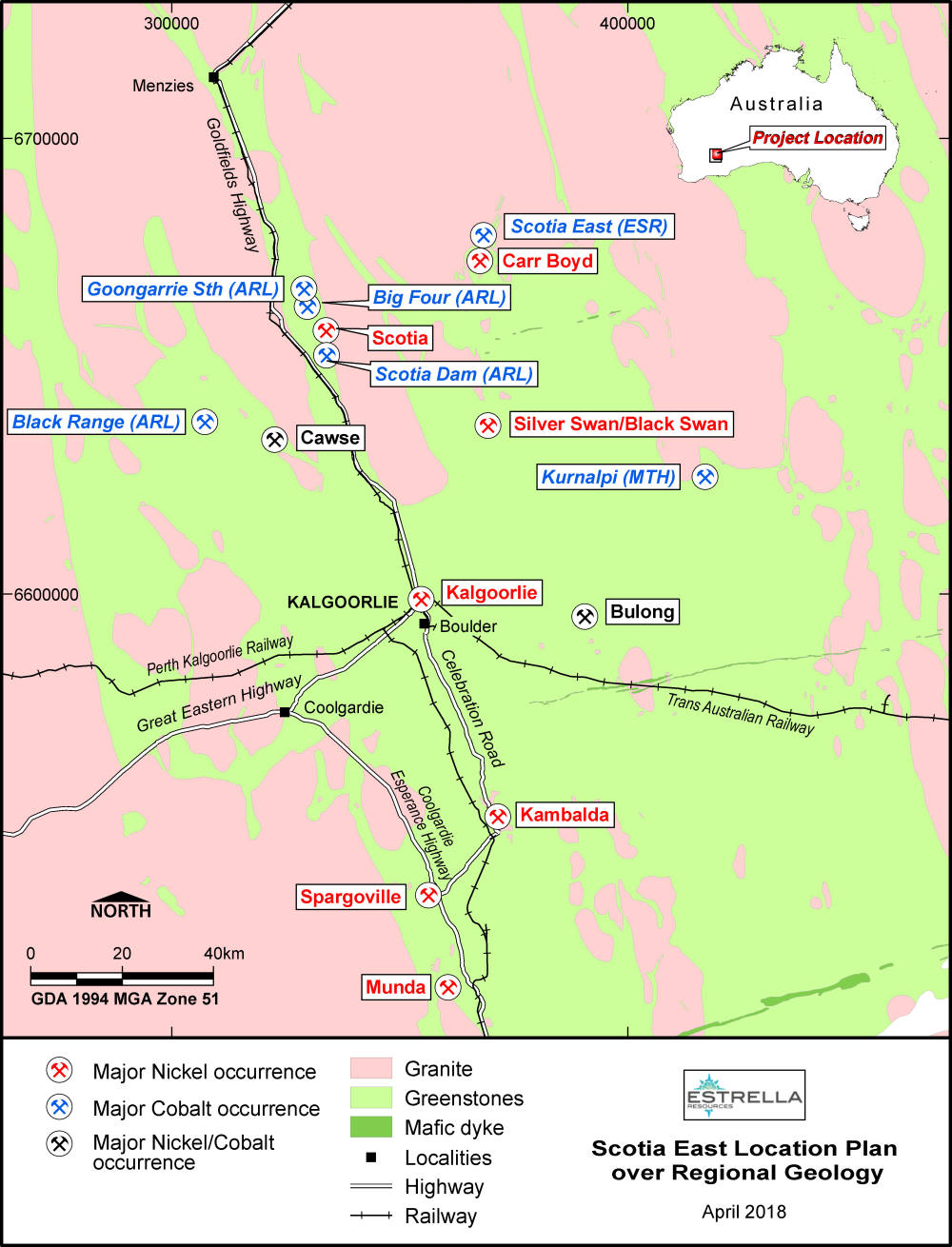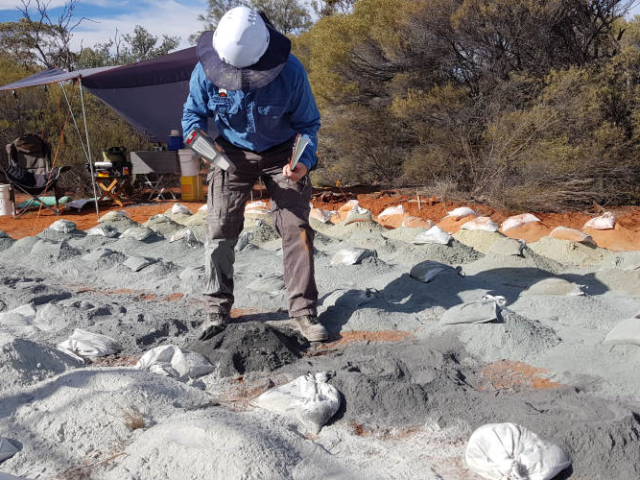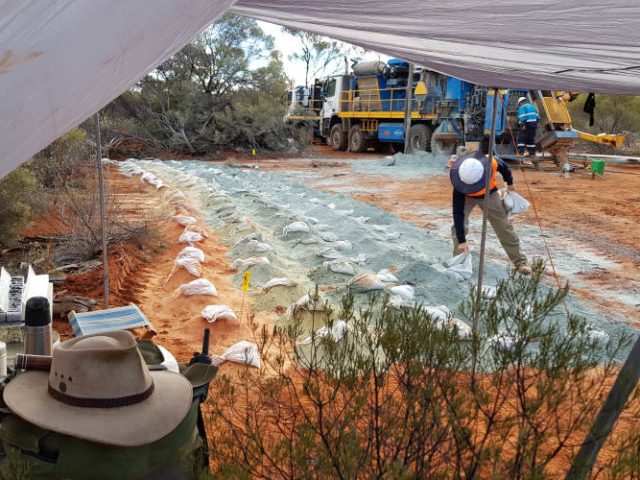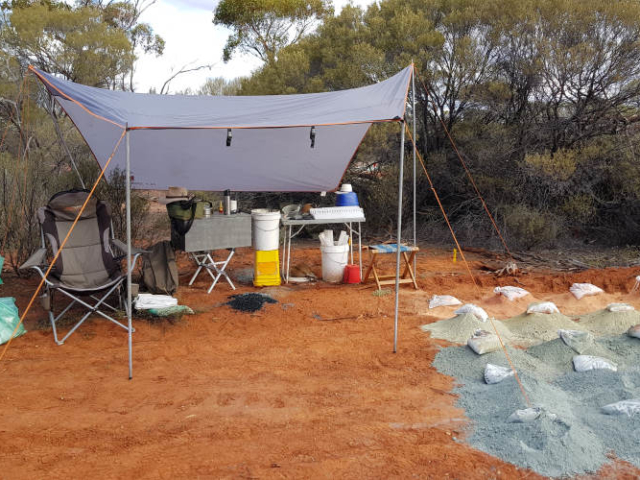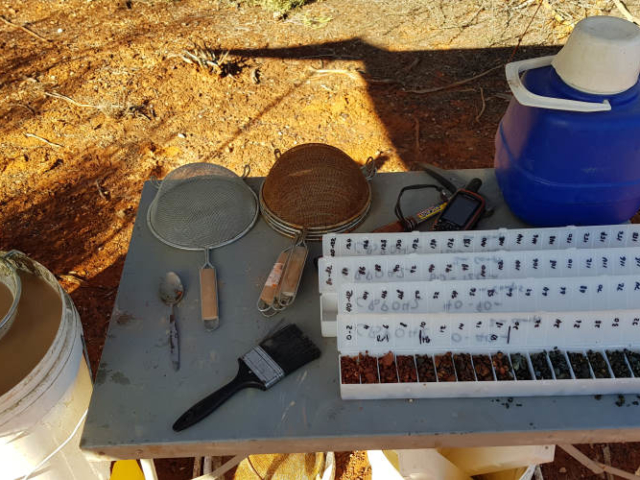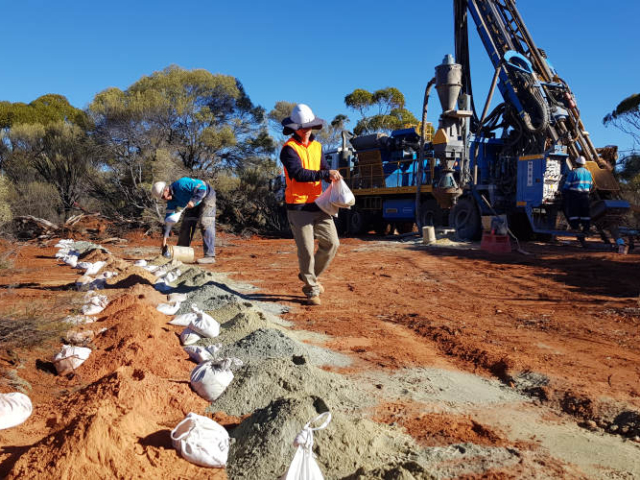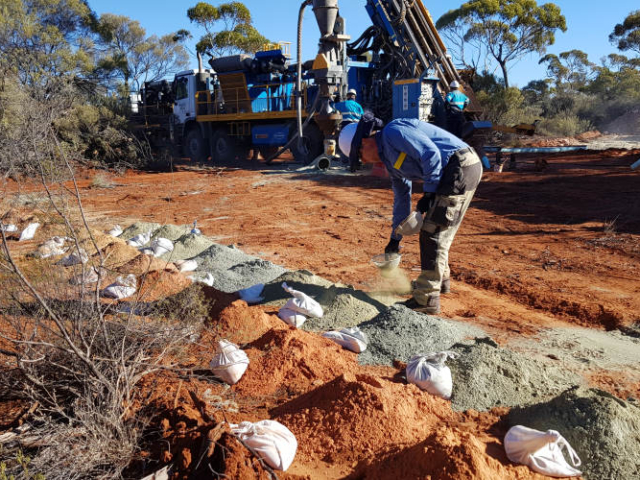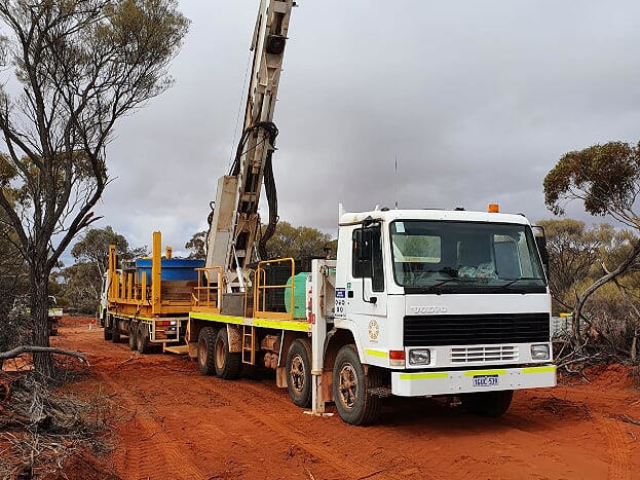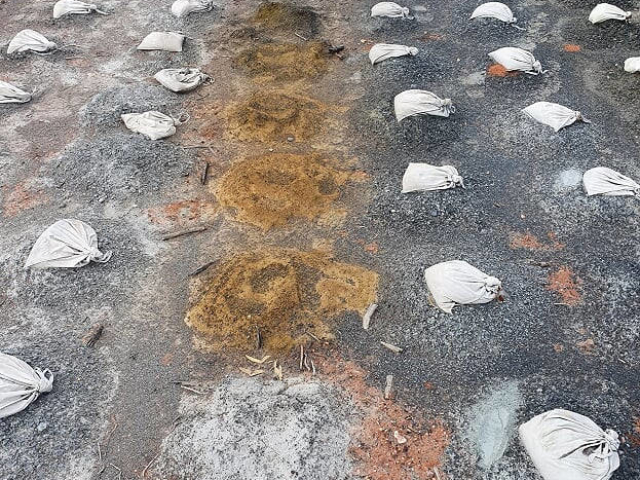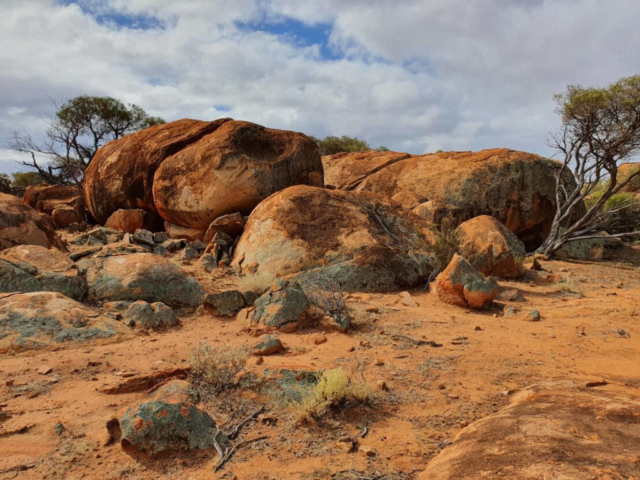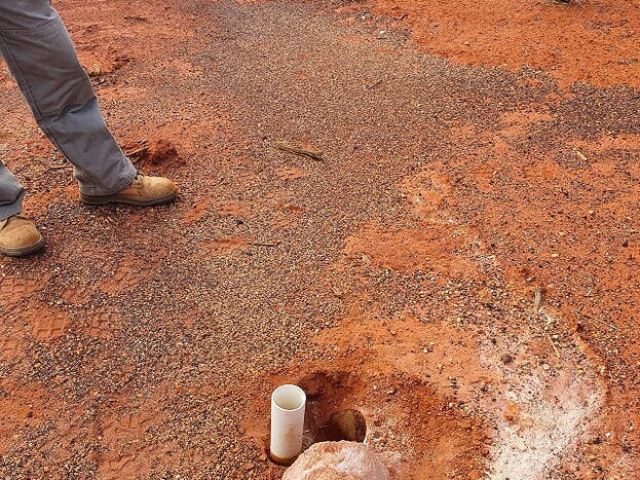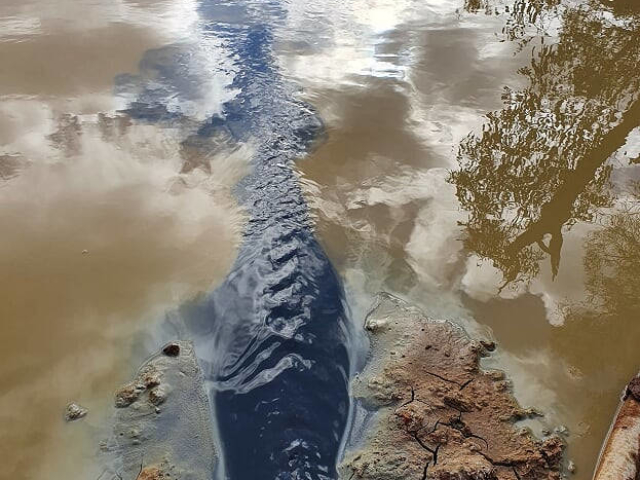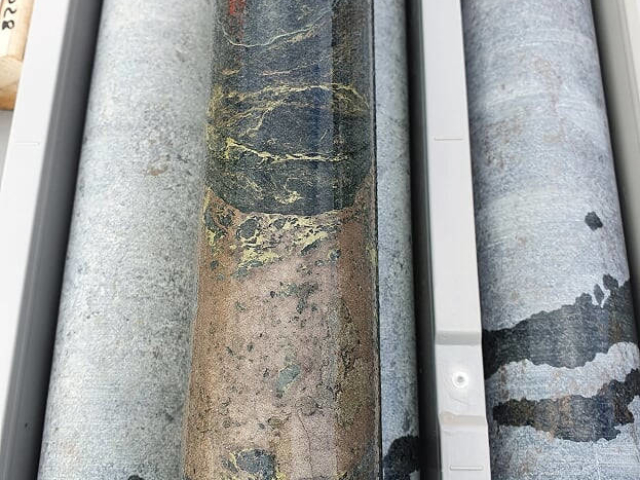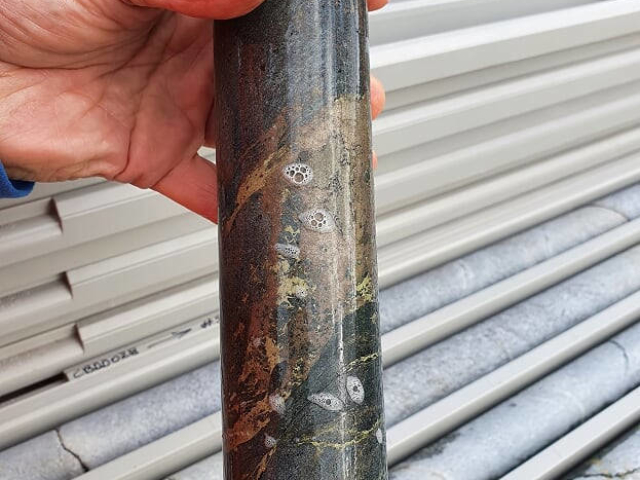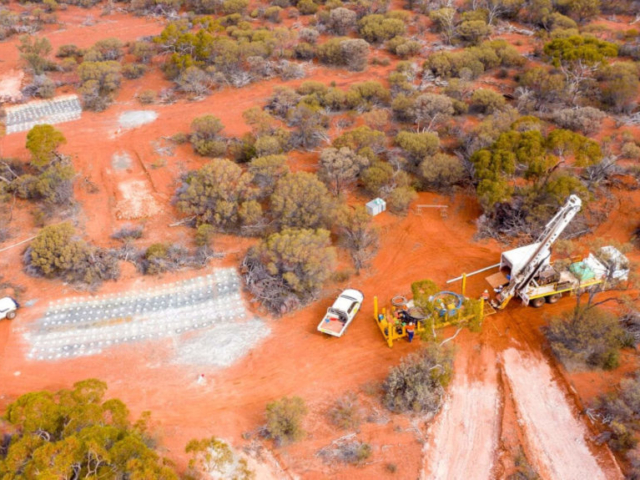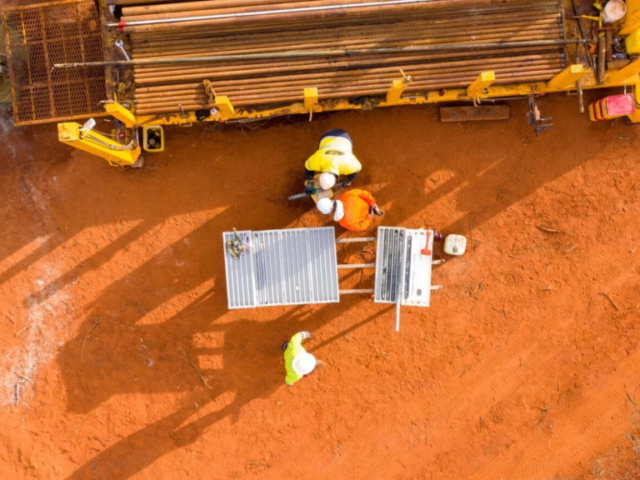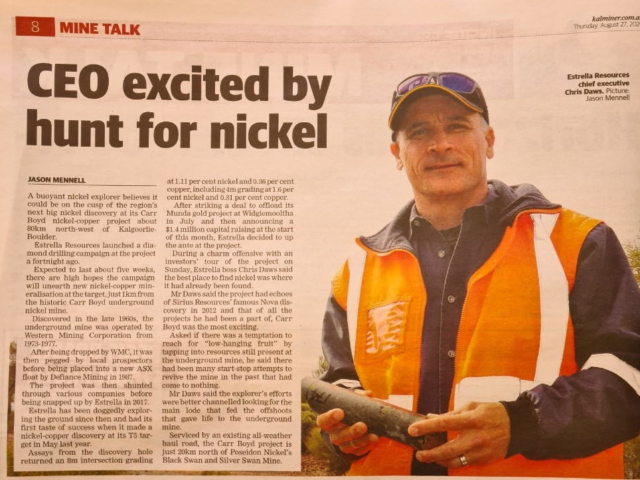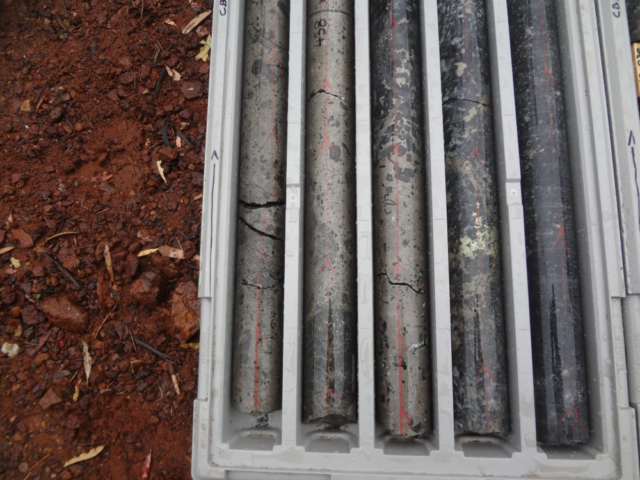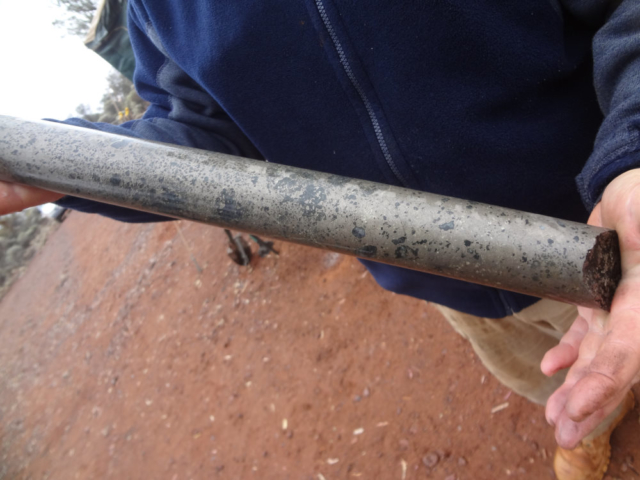CARR BOYD NICKEL PROJECT
The Carr Boyd project consists of 228km2 of tenure and has demonstrated to contain a broad array of mineralisation, including massive nickel-copper sulphides. Estrella published an initial JORC Mineral Resource for the T5 Deposit along with an Exploration Target of between 35 kilotonnes and 105 kilotonnes of nickel metal.
Carr Boyd’s mineral potential is driven by its highly prospective host rocks, which include the Carr Boyd Igneous Complex (CBIC), a layered mafic-ultramafic intrusion which covers a surface area of some 78km2 and the Colreavy Komatiite, a 16km long komatiite flow sequence hosted within felsic sediments.
The CBIC hosts the Carr Boyd Mine which was discovered in 1968 and mined between 1972 and 1976. The origins of the sulphide-gabbro breccia making up the mined ore-zones at Carr Boyd had never been adequately explained, nor had any other significant massive sulphide bodies been found until 2018 when the T5 massive sulphides were drilled on the CBIC basal contact some 1.5km to the northwest of Carr Boyd.
Since then, additional massive sulphides have been discovered at Broonhill and Estrella has located Ni-Cu sulphides at several other prospects along the 16km long basal contact of the CBIC.
Estrella embarked on a partnership with the CSIRO which has unlocked many of the rationale to propose a new, updated and scientifically based generational model. The studies concluded that the Ni-Cu sulphides at T5, Broonhill, Carr Boyd and Mossgiel all have been generated separately from one another. The study has not yet been extended to the sulphides at Tregurtha, Gossan Hill, POH and other locations within the complex.
This model has also shown that it is not just the basal contact within the CBIC that can host significant massive sulphides, but also a series of internal contacts, such as that responsible for the formation of the Carr Boyd Deposit, which lies in a position internal to the intrusion, providing further opportunities for major exploration success.
The Colreavy Komatiite has gained little attention through the 55-year exploration history of the Carr Boyd area. Deep weathering and colluvial cover, along with the perceived greater prospectivity of the CBIC have conspired to limit exploration of this highly prospective lava sequence.
In late 2023, Estrella Resources deployed world-first technology, known as a Time-Domain Audio Frequency Magnetotellurics survey (AFMAG) along with the next-generation TargetEM system released by Expert Geophysics, which highlighted the potential of the Colreavy komatiite, located immediately west of the Carr Boyd basal contact. The komatiite is relatively untested and further exploration is required to explain the highly anomalous response from this extensive sequence.
The TargetEM and AFMAG surveys also highlighted numerous bedrock conductors within the CBIC which require follow-up exploration.

